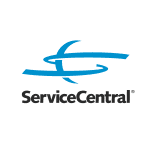From your initial RMA creation in the internal facing portal to the delivery of a new or repaired product, the optimization of the workflow process is key for successful 3PL (third-party logistics) operations. While the supply chain is complex enough in the initial distribution of products, pain points in the reverse supply chain can arise at every level and especially for the service provider who faces both the OEMs and the consumers.
Internal communications and a competent service management system are key to delivering quality third-party services. This post will highlight common pain points in RMA workflow processes (or lack thereof) as well as some solutions for them. Stick around to learn more.
#1 Chaotic Interfaces
Trouble looking for what you need on your program? Simplicity is key when it comes to user interfaces and the user experience of RMA software. Common complaints of software management users include complex menus, tools that are difficult to understand, and vague or ambiguous catalog navigations.
The user interface of service management software should be simple to use while still capable of delivering complex needs like warranty claim ticket creations.
#2 Lack of Inventory Management Assistance
Between the authorizer, the service provider, and the consumer, there are a lot of points along the way where a SKU or RMA ticket can become misplaced or disappear altogether. If your software lacks inventory management automations or other intuitive features, that’s a good sign it’s time to move on.
Adequate inventory management saves service providers on stress and overhead costs. This is especially important for repair centers that provide trades and sell used items and parts. But it also matters to the service provider offering returns operations.
#3 Inaccurate or Incomplete Customer Information
Nothing interrupts internal workflows quite like missing customer information. Sure, you may have visibility on the item’s return journey, but when it comes time to inform a customer that their new or repaired item is complete, do you have the right contact info? Seems a simple thing to keep in your system, but it’s a common issue for a lot of companies – especially in the world of retail.
From warranty claims to implementing email promotions, the success of processing administrative tasks hinges heavily on your software’s CRM capabilities. Be sure your customer management portal houses accurate addresses and contact details. An inability to accurately store this information could lead to failed texting notifications and poor customer relations.
#4 No Ticket Tracking
Ticket tracking updates should be visible to everyone in the workflow process and beyond. That includes authorizers, fellow service providers, couriers, and customers. A quick way to poor customer relations and a rift in partnerships is a system with no tracking capabilities. When a ticket is created, its journey should be visible from reception to delivery, and the details of the item should be easy to access in the system.
Optimized rightly, ticket tracking features will integrate with CRM data, enabling workflow status processing triggers to then send out email and SMS notifications. Examples of these status triggers include progress updates, requests, completion updates, and RMA receipts.
Reverse Logistics Software for 3PLs & More
As a service provider, your organization needs to be responsive to customer and authorizer demands by providing a wide range of technical capabilities and internal integrations. ServiceCentral’s reverse logistics management software, ServiceManager, guides service workflows, helps providers manage their inventory, and enables companies to integrate their networks into shared ecosystems for actionable business intelligence.
Have questions? Connect with us online or give us a call. You can also send a sales inquiry using the form below.





